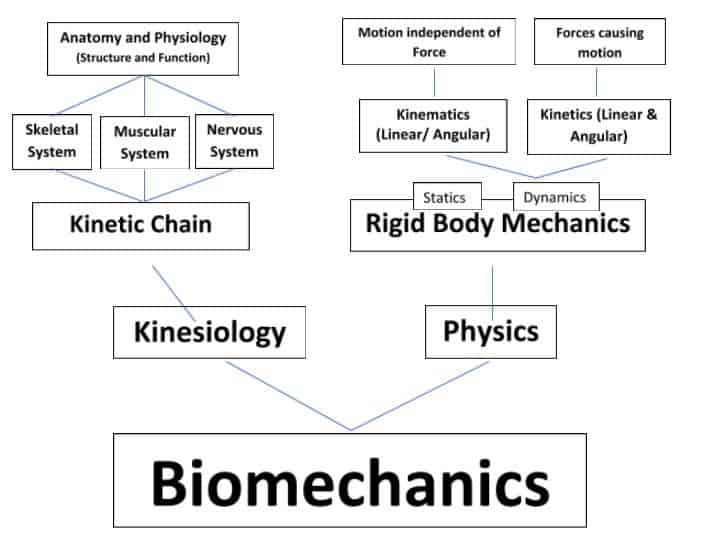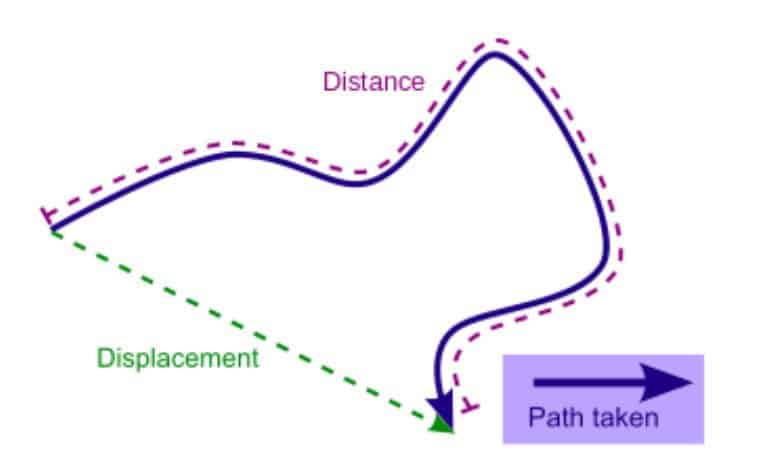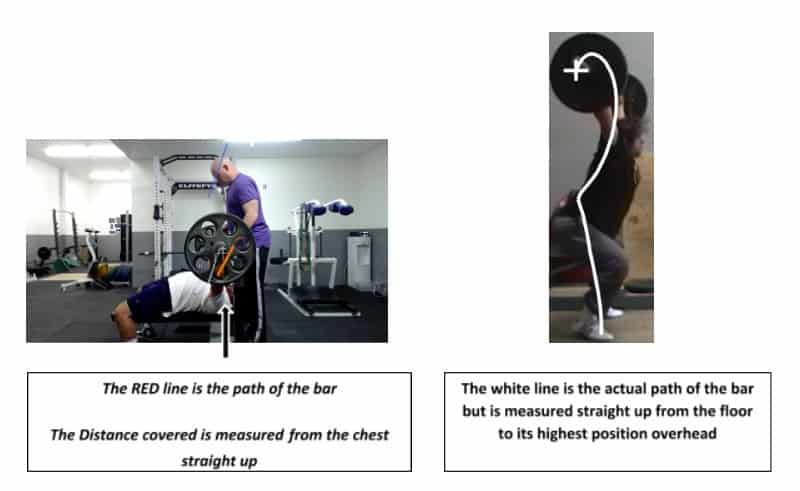The Basics of Biomechanics and Power
The overall ideology of Biomechanics is the study of forces on the human body and their effect on movement. This subject is broken down into two major divisions:
- Kinesiology (The Study of Human Movement)
- Physics (Rigid Body Mechanics)

The general definition of motion is the displacement (movement) of an object or system. There are four types of motion: linear (rectilinear or straight line); curvilinear (objects that travel in a curved path); rotary (circular motion or movement of a link or system around an axis of rotation); and general (combination of both linear and rotary motion).
We learned that the backbone of Kinesiology is the kinetic chain. The kinetic chain is the “chain” of systems that “link” together to create human movement and is comprised of the skeletal, muscular, and nervous systems.
In order for the movement to take place, the systems must coordinate or integrate together, i.e. the entire body must work together as an integrated unit (remember a “system is a body or group of bodies to be studied or examined. A “link” can be a segment, linkage, connection, or a “sub-system of a primary system” – in this case, we are referring to the human link system made up of eleven individual systems or links).
Kinesiology also studies and identifies the muscles which create the internal forces imposed on any point on a link system, against gravity or some form of applied external load to the body or systems creating the external force (please note here that FORCE is anything that causes or tends to cause a change in motion, i.e. F = ma and all the associated formulas related to force).
How forces influence these systems is under the category of Kinetics. Movement independent of forces causing linear and rotary movement is under the heading of Kinematics. Both kinetics and kinematics fall under the heading of Rigid Body Mechanics. The human body is considered a “rigid link system”, therefore the term rigid body is appropriate.
We must also investigate the concept of “Power.” Most in the training industry relate this term to very fast or explosive types of movement; however, the term has been recently re-reviewed for a more concise interpretation (Knudson, 2009).
Power output has long been a highly debated issue in both the sports performance and exercise training communities. Increasing or improving power output has caused the development of numerous measurement protocols by coaches, exercise trainers and specialists as well as sports scientists to estimate energy expenditure during work or exercise as well as the rate of energy expenditure (power output) (Garhammer, 1993).
These estimation protocols also have created the development of numerous training programs to increase power output based on inexact data not supported by legitimate training science.
Power is the RATE at which work is performed. Work is force times displacement. A displacement is the shortest distance from the initial to the final position of a point. A ‘displacement vector’ represents the length and direction of that imaginary straight path.
Displacement is often correlated with distance. This term (displacement) means “movement” with distance meaning the length between two objects. An object can, therefore, be “displaced” but its distance could be in a winding path motion (such as a running course) and measured in terms of meters, centimeters, feet, inches, etc. This displacement of the object in question is from start to finish.

Real life examples: performing a bench press and a snatch. For the bench press the bar is displaced from the chest to arm’s length (straight line up from the position on the chest), however, the path of the bar is not in a straight line but moved in a particular curved or slightly backward path but again the displacement is measured from the chest straight up. For the snatch, the displacement is measured from the floor to the highest position overhead. However, the path taken is in an “S” shape.

The amount of work done (W = f X d) can be very fast or instantaneous, or it can be done slowly over a long period of time with substantial differences in energy expenditure.
Therefore, we are taking a different approach to teaching the subject of biomechanics based on the concept that the human body is a machine that is designed to create motion, whether in activities of daily living, exercise, or sport performance, and perform work of various kinds and at various speeds – all of which is directly and intimately related to power and energy output.
Biomechanics and power go hand in hand and must be coupled together to evaluate how the kinetic chain operates efficiently and effectively for optimal performance.
As a trainer or fitness coach, its always essential to know how you have the best approach to your clients’ training, and having this knowledge is key to doing just that.
Click here for a free in-depth video training on biomechanics and human movement.






